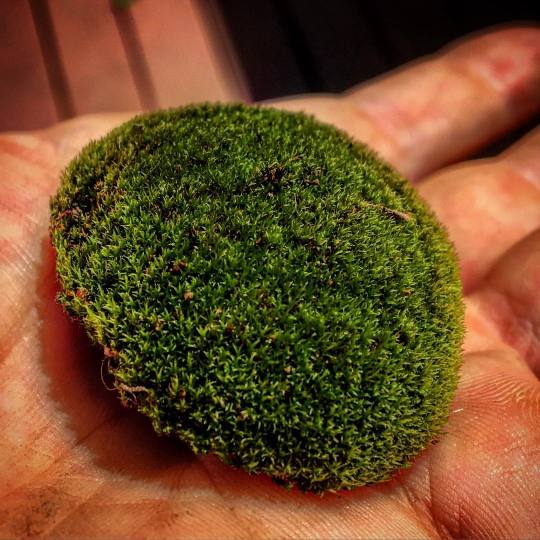Text
Trees as protectors
Our lawn is pretty large, about two hours by push mower. I don’t like large lawns, and I have plans, oaths even, to reduce its size, year after year, until it’s just big enough to play cornhole or catch on. Until then, I walk it, and I observe the microclimates it stretches across, its various plant communities and contours.
The back lawn is run through with clover, and thrives because of it. I found a patch of yarrow, a juniper practically made into bonsai by mowing, and a rose bush, the lone survivor of a past hedge. The tree-of heaven colonizes by root in the hardest, most competitive soil.
Among the most striking of these small fascinations is the effect of the grass on the trees. For most of their wingspan under which they cast their shade, the grass is greenest. April and May here brought us to early drought conditions, and the lawn slowly browned. But not under the trees. The front corner of the yard is graced by three picture-perfect old sugar maples that cast thick shade over much of the ground. The grass plants there stayed protected, perhaps wanting for sunshine but basking in soil that drained only as much as they wanted for water. It was then where the birds flocked and the non-grasses continued to bloom.
That grass under the maples will be among the only lawn that will remain as I continue to chip away.
*
When I first met Katie Funk, I was angry. Not at her, of course, but I was angry all the same. I had driven what should have been a one-hour drive in two hours, navigating a dying snowstorm through Illinois country roads that were adrift with powder. It was a very dangerous pre-dawn trip, as I braked and skidded my way through the beginning of what was still to be a 10-hour road trip.
It was frustrating enough just to slide my way through the mess, but what got stuck in my craw is where the roads were not bad. Every time I passed a structure along the roadside, the drifts abated and my driving was made safer. And most of those structures were trees. And most of those trees were survivors that rooted in negligence: hackberries and ashes and spindly cedars, occasionally an oak. Particular blessings were the rare evergreen windbreaks that certain thoughtful landowners had established, where the road was clear and my jaw unclenched.
I was still fuming about the destruction of trees and the gross ineptitude of Earl Butz when Katie loaded her luggage into my car at dawn. Luckily she fell in love with me anyway.
*
We are in the first stages of the establishment of our farm, we being Katie and me and her brother Jonny. We are growing on land owned by their parents, a nine-acre piece bordered on all sides by trees, most closely by a beautiful grove of mixed hardwood that the Funks tap for maple sap. Parcels like this are rare, and usually small as compared to the unending open acreage of the nearby cornfields.
The trees buffer us from pesticide and herbicide applications on those other fields, allowing us to grow grapes and tree fruit and, maybe someday, become certified organic. Established trees around our “building” (it’s undergoing a lot of work) keep it shaded and cut the wind. The scrubby growth along the maple grove, capturing half-sun and safe from the hay rakes, teems with elderberries, black raspberries, and incredible birdsong. Our newly-established orchard is beginning to cast shade and promote small mushrooms, and Katie spotted a toad settling in a few days ago.
Our wild contrivances to yield more and clear roads and maintain our green courtyards and fight our environment are an economic engine that churns with muddled purpose. And they’re nigh on embarrassing when we look to trees as protectors, who will do so in exchange for just being left to grow.
2 notes
·
View notes
Text
I’ve realized that the best way to define my goal in life is that I want to be the Vianne-of-the-movie-Chocolat of fresh, local food. Entice people to come into my shop that is full of incredible food produced by our neighbors, and know intuitively the one item to hand them that will magically convince them to transform their diet.
1 note
·
View note
Text
Rise(s) and fall(s) of the gypsy moth caterpillar
The wooded landscape of the US Northeast last year was defined by the substantial impact of the gypsy moth infestation. Many thousands of trees, mostly oaks and some other hardwoods, were killed or seriously injured. This year the caterpillars returned and it looked to be another disastrous year for a landscape that, despite ongoing human impacts, has actually cautiously returned to a “climax community” state in many areas. That return, as it were, to a climax state is a far cry from the expansive denuding from aggressive agricultural, silvicultural, and other resource extraction that peaked in the late 1800s, which ebbed only due to slow ecological collapse and other, easier resource extraction opportunities out west. But what the gypsy moth infestation has taught is that the single greatest threat to our forests and their health is our continued willingness to threaten them with new variables: climate change, resource extraction, introduction of new species, spatial fragmentation, pollution, and other choices we collectively make without thought to their consequences.
What interests me in the interim is the impact of the mass die-off of all these oak trees. The fascinating change from last year to this year was the sudden mass death of the gypsy moth caterpillars. The literal rise of the caterpillars was clear: they were writhing in masses up the sides of the remaining healthy trees, particularly white oaks, dead-set on the leafy canopy. But the late spring was wet. Very wet. The trees were soaked, and so were the caterpillars, and suddenly they stopped moving. I noticed that a beech tree on our farm was suffering early impacts as the caterpillars went to work, but then at some point before any significant impact, they stopped chewing. A fungus, Entomophaga maimaiga, was on the job. The heavy, continuous rainfall encouraged it, and before long, the caterpillars were dead in their tracks. They are still out there, attached to the trees (and still able to get their stiff hairs stuck in your skin, so heads up for that), to go no further.
So what now? Well, first the obvious, the observable, the facts:
-many large hardwood trees, mostly oak, are dead or have substantial deadwood
-many living hardwood trees have a substantial amount of very small dead animals on their bark
-the trees are beginning to drop limbs or fall entirely
-the forest floor is now wide open in many places and the understory is teeming with new growth; in addition, many waterways and water’s edges are now exposed
-fungal growth in the deadwood is rampant
What could the impacts be, whether they are already occurring or in development?
-vastly increased fungal activity as high-energy hardwood provides substantial substrate
-increased habitat for deadwood dwellers, from owls and woodpeckers to innumerable invertebrate species
-the dominance of new, non-hardwood species as canopy trees, such as white pine and Eastern hemlock, or hardwood species such as hickory that seem far less vulnerable
-larger understory trees and shrubs, such as American holly, dogwoods, clethra, and blueberry
-increased chance for forest fires due to understory growth
-increased evaporation in larger waterways due to decreased coverage; hard for me to hypothesize adequately what the impact would be on hydrology in smaller waterways, or what would be the larger effect on hydrology in the region generally
-increased blockage and oxygen consumption in waterways due to deadwood fall
-a ripple effect in herbivory, wherein 1) species such as white-tailed deer decrease their impact on human landscapes due to substantial foraging in safer areas; 2) a boom in population due to easily-accessed forage; 3) a push back into human landscapes; 4) an eventual rapid decline in population due to hunting and overfeeding
-a similar ripple effect in species of ticks, mosquitoes, and other pests that we are not going to be pleased with, and related human and veterinary healthcare costs
-increased injury and death to human motorists as trees and branches fall on roadways
-increased expenditure clearing those trees
-decreased cost of firewood for 1-2 years as supply increases substantially
-decreased costs of foraged mushrooms for 2-3 years as supply increases substantially
-changes in yard and lawn care due to increased sun exposure, from bleaching of hardscapes and homes to burnt lawns and increased weed growth
Does anyone know where and how these impacts are being tracked and studied?
1 note
·
View note
Quote
In an age of Disney and cyberspace, it may not be possible to keep a crude pair of terms like Her and There straight too much longer, not when a "sense of place" becomes a commodity that can be bought and sold on the international market, and people blithely use homey metaphors of place to describe something as abstract and disembodied as the Internet.
Michael Pollan, A Place of My Own, 1997
0 notes
Photo

Details at the ledge. #geology #rocks (at Town of Leyden)
0 notes
Text
Cultura promiscua
“[In the early Roman republic], the average farm still consisted of roughly one to five acres of land, just enough land to feed a family. Many prominent Roman family names were derived from vegetables their ancestors excelled at growing. Calling a man a good farmer was high praise in the republic. Cincinnatus was plowing his fields when summoned to become dictator in 458 BC.
Early Roman farms were intensively worked operations where diversified fields were hoed and weeded manually and carefully manured. The earliest Roman farmers planted a multistory canopy of olives, grapes, cereals, and fodders crops referred to as cultura promiscua. Interplanting of understory and overstory crops smothered weeds, saved labor, and prevented erosion by shielding the ground all year. Roots of each crop reached to different depths and did not compete with each other. Instead, the multicrop system raised soil temperatures and extended the growing season. In the early republic, a Roman family could feed itself working the typical plot of land by hand. Using an ox and plow saved labor but required twice as much land to feed a family. As plowing became standard practice, the demand for land increased faster than the population.” -Dirt: The Erosion of Civilizations, David R. Montgomery
1 note
·
View note
Photo

Wheat taking the heat. @spencefarmfoundation #farmers #wheat (at Spence Farm LLC)
0 notes
Photo

This is all I got on my last-ever milk run. #butter #butter #butter #butter #backwhenhashtagswerepoundsigns
0 notes
Photo

Beautiful, if hot, day for our Rotational Grazing Field Day. More photos and videos to come. @thelandconnection #farmertraining #livestock #grazing (at Seven Sisters Farm)
0 notes
Photo

I went a liiiittle crazy at the farmers' market today. Tomatoes, cucumbers, bell peppers, hot peppers, kale, carrots, cherry tomatoes, salmon, brats, bacon, bread, bagels, broccoli, snap peas, shell peas, dark chocolate hazelnut shortbread, red currants, red raspberries, and a pepperoni pretzel from Pekara for a quick dinner. Time to cook and munch! #farmersmarket #localfoods #okthesalmonisnotlocalbutitsalocalcompany @thelandconnection @pekarabakehouse @oldtownflowerscu @sitkasalmonshares (at The Land Connection)
1 note
·
View note
Photo

My dear elderbumble. #summer #june #bees (at Epiphany Farms)
0 notes
Video
Stocking up. #cooking #stock #soup
1 note
·
View note
Photo

Apparently Sola Gratia had their own hawk now, named Gus. #hawk #birds #readytokill (at Sola Gratia Farm)
0 notes



